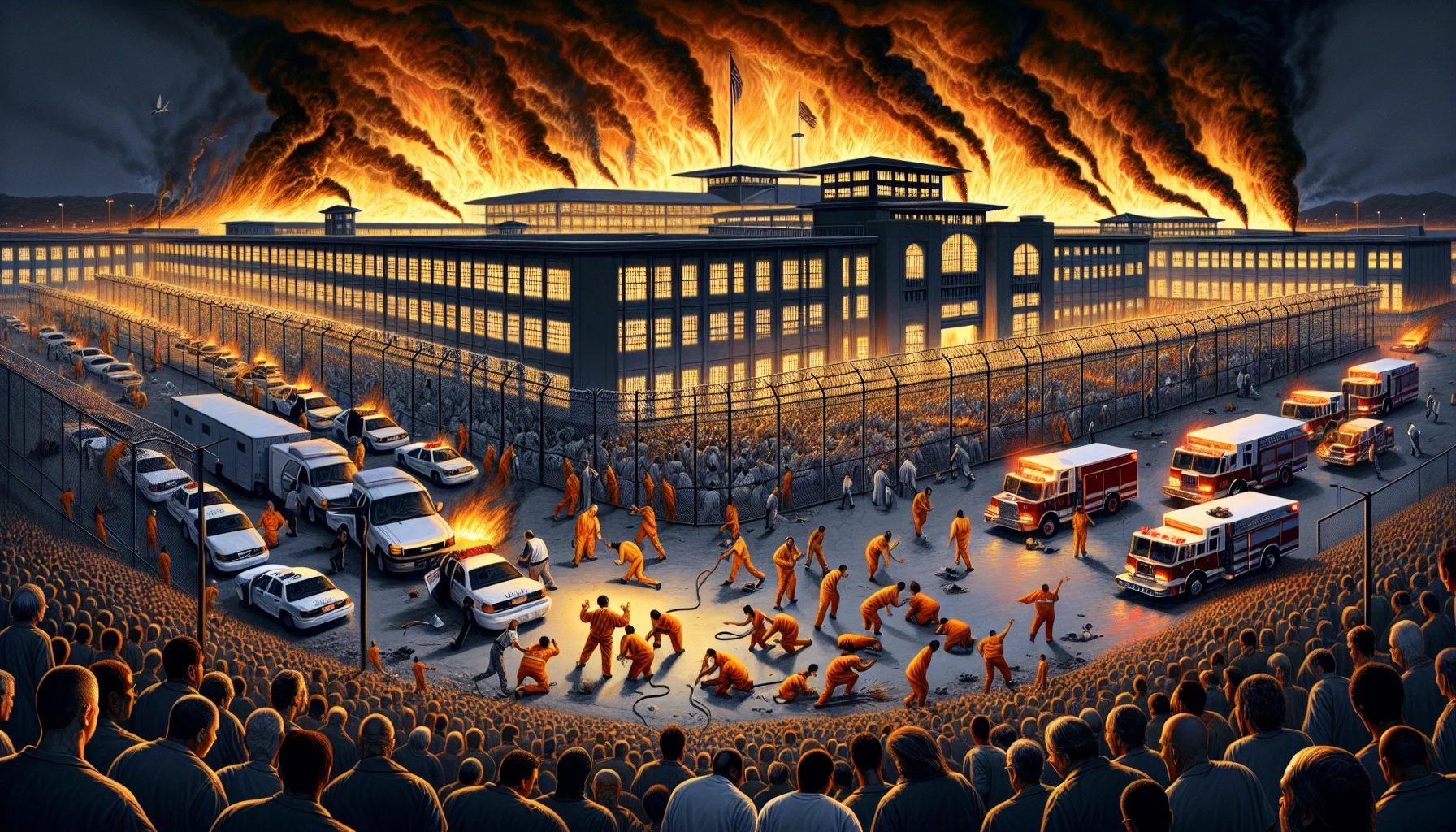
Comayagua Prison Fire
by: The Calamity Calendar Team
February 14, 2012
A Night of Devastation
In the tranquil town of Comayagua, Honduras, the evening of February 14, 2012, held a silent tension beneath its starry sky. The National Penitentiary, an overcrowding island of despair in a country staggering under the weight of systemic failures, stood imposing yet vulnerable. This night would take a devastating turn as the clock neared 11 PM, marking the beginning of a calamity that would lay bare the terrifying truths of the Honduran prison system.
The Backdrop of a Catastrophe
The Comayagua Prison, like many of its counterparts in Central America, was bursting beyond its seams, housing double the inmates it was designed for. Confronted with the daily realities of mismanagement, understaffing, and dilapidated infrastructure, this was a facility teetering on the brink of disaster. The prison's population included hardened criminals alongside those sidelined by a system languishing in bureaucratic sluggishness, awaiting trial. This volatile mixture of humanity congregated in an environment sorely lacking in both space and resources, a recipe for disaster waiting to unfold.
Second-class citizens even within society's fray, these prisoners endured inhumane conditions. The resources were scant, with inadequate medical facilities and a glaring absence of emergency protocols. Lax security standards and inadequate training plagued the facility, turning it into an institution fraught with peril not just from the inmates but from the vulnerabilities implicit in its design.
The Fire Ignites
The tranquility of the night was brutally interrupted as the first signs of smoke and flames revealed themselves between 10:50 PM and 11:00 PM. Witnesses inside the prison recounted the eerie chorus of confusion and panic as fire spread with aggressive swiftness. While suspicions swirled around the idea that an inmate might have set a mattress ablaze, the origins of the fire have never been definitively determined, shrouding this catastrophic event in an enigmatic haze.
Fueled by materials readily available in the overcrowded cells, the blaze swept through the complex with alarming speed. Panic intensified as fiery tongues devoured the confined spaces. Hope and despair intermingled as prisoners shouted for help, their cries hopelessly muffled by the roaring inferno and the prison’s unforgiving walls.
Chaos and Delay: A Fateful Response
The guards, though faced with the immediate urgency, were swiftly overtaken by chaos. Lacking keys to many of the cells and facing mass confusion, their initial attempts to evacuate inmates were futile. Locked doors became dire symbols of neglect as prisoners’ pleas added a cacophony to the mounting devastation.
Thanks for subscribing!
The unfamiliarity with emergency protocols exacerbated the disaster. Precious minutes slipped by, a tragic delay that sealed fates as the fire raged uninhibited. It was not until nearly 30 minutes into this harrowing ordeal that the Comayagua fire department received their call to action.
The firefighters, burdened by the prison’s structural challenges and the dense overcrowding, battled valiant odds to stem the blaze. However, the conditions within the prison impeded their efforts, and the fire had long advanced beyond the possibility of saving many lives.
The Aftermath: Loss and Outcry
As dawn broke over the shattered institution, the full scope of tragedy was unveiled. The Comayagua Prison Fire claimed 361 lives, marking it as one of the deadliest prison fires in recorded history. The air was thick with grief as families gathered in shock, haunted by the knowledge of their loved ones’ long night of suffering. The charred remains of the structure stood as a tragic testament to the failings of the system, demanding accountability and change.
Criticism toward the Honduran government surged, with both local and international voices condemning the dismal conditions that contributed to the loss of life. Human rights organizations amplified calls for reform, citing the overcrowding, inadequate safety measures, and the indifference within the prison systems that had led to this tragedy.
Calls for Reform and the Struggle for Change
Under mounting pressure, the Honduran government pledged sweeping reforms. Promises were made to tackle overcrowding, enhance safety measures, and improve emergency responses within prisons. Policies aimed at rehabilitating the penitentiary system were outlined, and commitments to better training and support for prison staff were declared.
Yet, as days turned to months and then years, progress remained precariously slow. The complexities embedded within the system, coupled with political hesitance, meant that change was an elusive pursuit. While the incident spotlit the dire needs for transformation, it became apparent that entrenched systemic issues would not easily shift.
Current Realities
Years following the fire, the festering challenges of Central American prisons — particularly in Honduras — persist as cautionary tales still writ large. Overcrowding continues unabated, and funding remains inadequate to implement comprehensive reforms. Although international organizations have endeavored to lend support, true progress remains constrained by the limitations of political will and resource allocation.
The Comayagua Prison Fire stands as a profound tragedy and a continuing indictment of the imperatives for human dignity within justice systems. It serves as a somber reminder of how missteps, neglect, and mismanagement conspire with deadly consequences. The recurring echoes of its calamity insist that reform is not optional but a moral exigency that demands urgency and commitment.
Stay in the Loop!
Become a Calamity Insider and get exclusive Calamity Calendar updates delivered straight to your inbox.
Thanks! You're now subscribed.